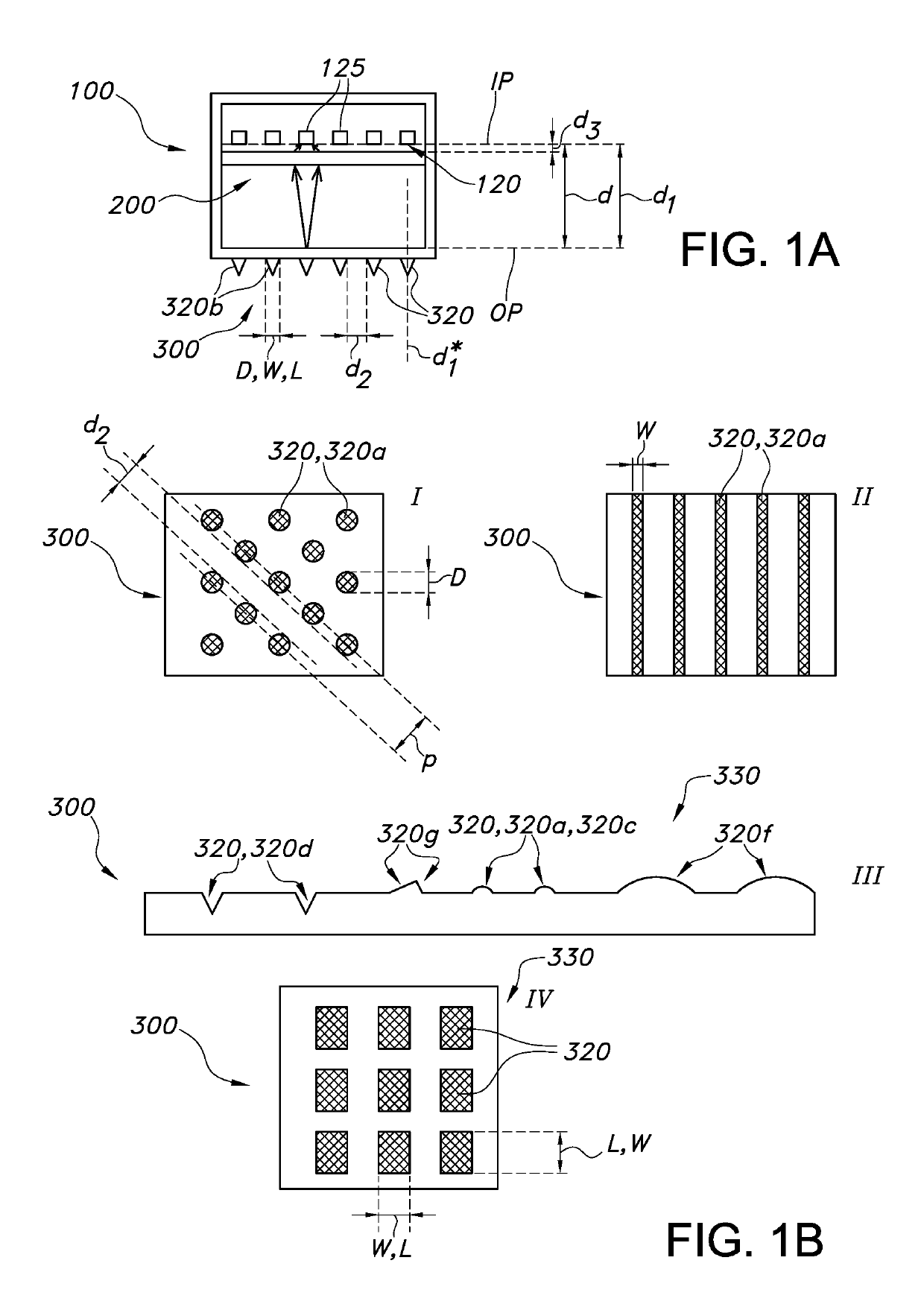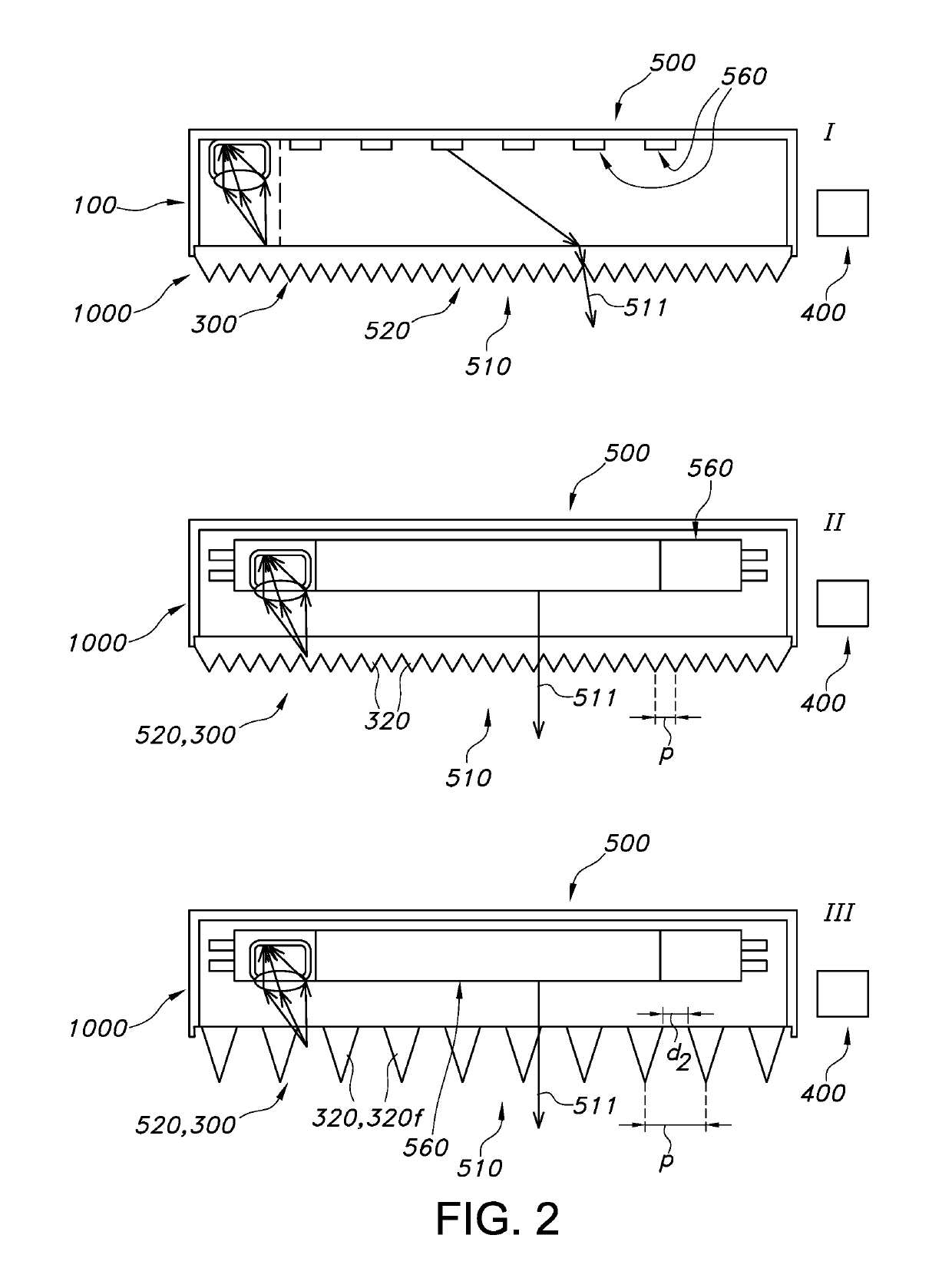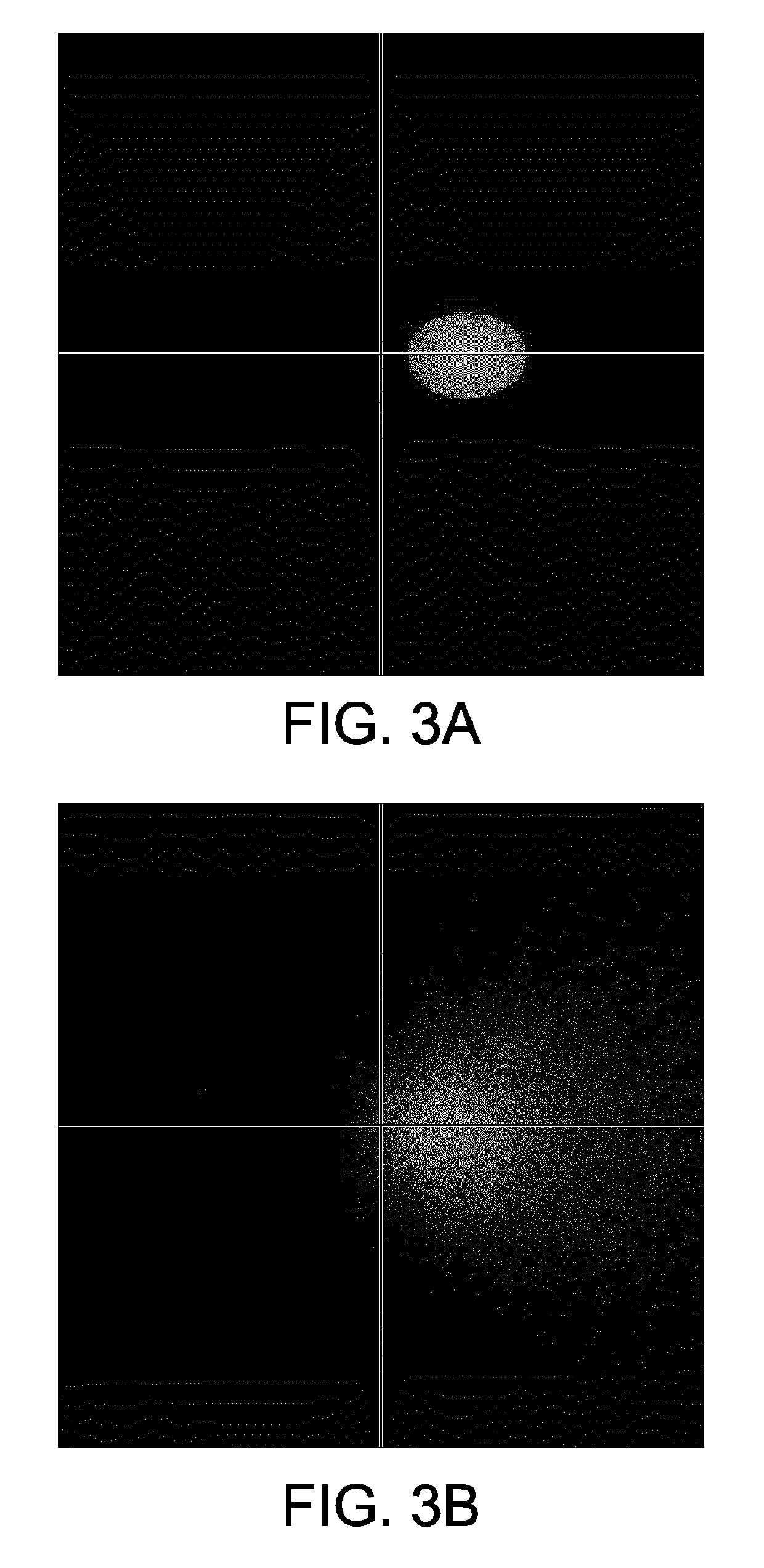Camera sensor hidden behind luminaire optics
- Summary
- Abstract
- Description
- Claims
- Application Information
AI Technical Summary
Benefits of technology
Problems solved by technology
Method used
Image
Examples
Embodiment Construction
[0054]FIG. 1a schematically depicts an embodiment of a sensor unit 100 comprising a sensor array 120 having at least 100×100 sensor pixels 125, though this is shown in a very simplified version with only 6 pixels by way of example. Further, an optional lens system 200 is schematically depicted. Also an optional light transmissive sensor window 300 comprising optical structures 320 is schematically depicted.
[0055]The light transmissive sensor window 300 is configured at a window distance d from said sensor array 120. The lens system 200 is configured to provide an object-image plane distance d1 selected from the range of 0.1*d-4*d, such as especially 0.9*d-1.1*d. Reference IP indicates the image plane, here coinciding with the 2D sensor array 120, and reference OP indicates the object plane, here by way of example essentially coinciding with the light transmissive sensor window 300. However, the object plane may also be upstream of this window 300 or downstream thereof (but relativel...
PUM
 Login to View More
Login to View More Abstract
Description
Claims
Application Information
 Login to View More
Login to View More - R&D
- Intellectual Property
- Life Sciences
- Materials
- Tech Scout
- Unparalleled Data Quality
- Higher Quality Content
- 60% Fewer Hallucinations
Browse by: Latest US Patents, China's latest patents, Technical Efficacy Thesaurus, Application Domain, Technology Topic, Popular Technical Reports.
© 2025 PatSnap. All rights reserved.Legal|Privacy policy|Modern Slavery Act Transparency Statement|Sitemap|About US| Contact US: help@patsnap.com



